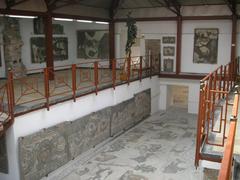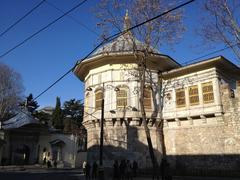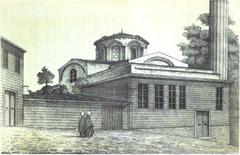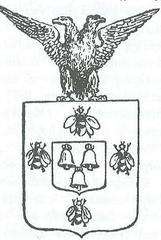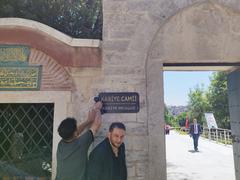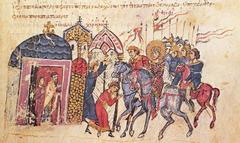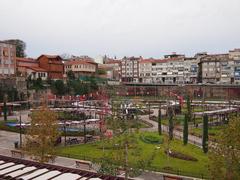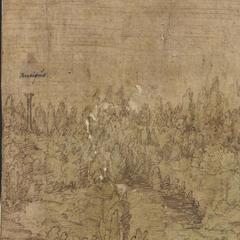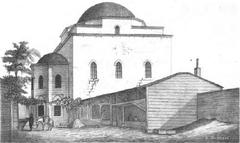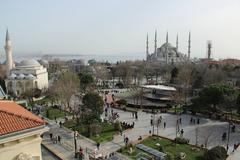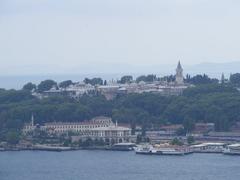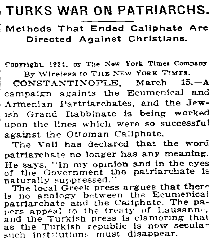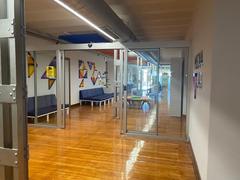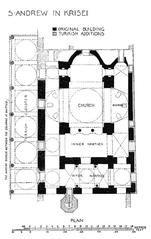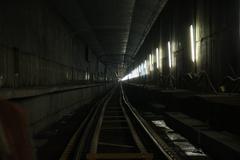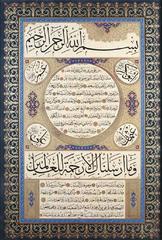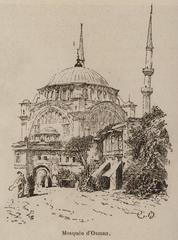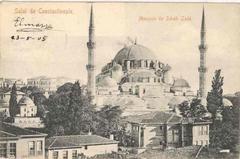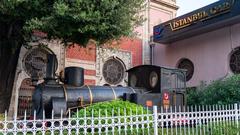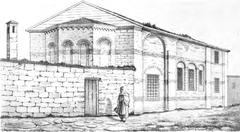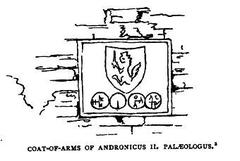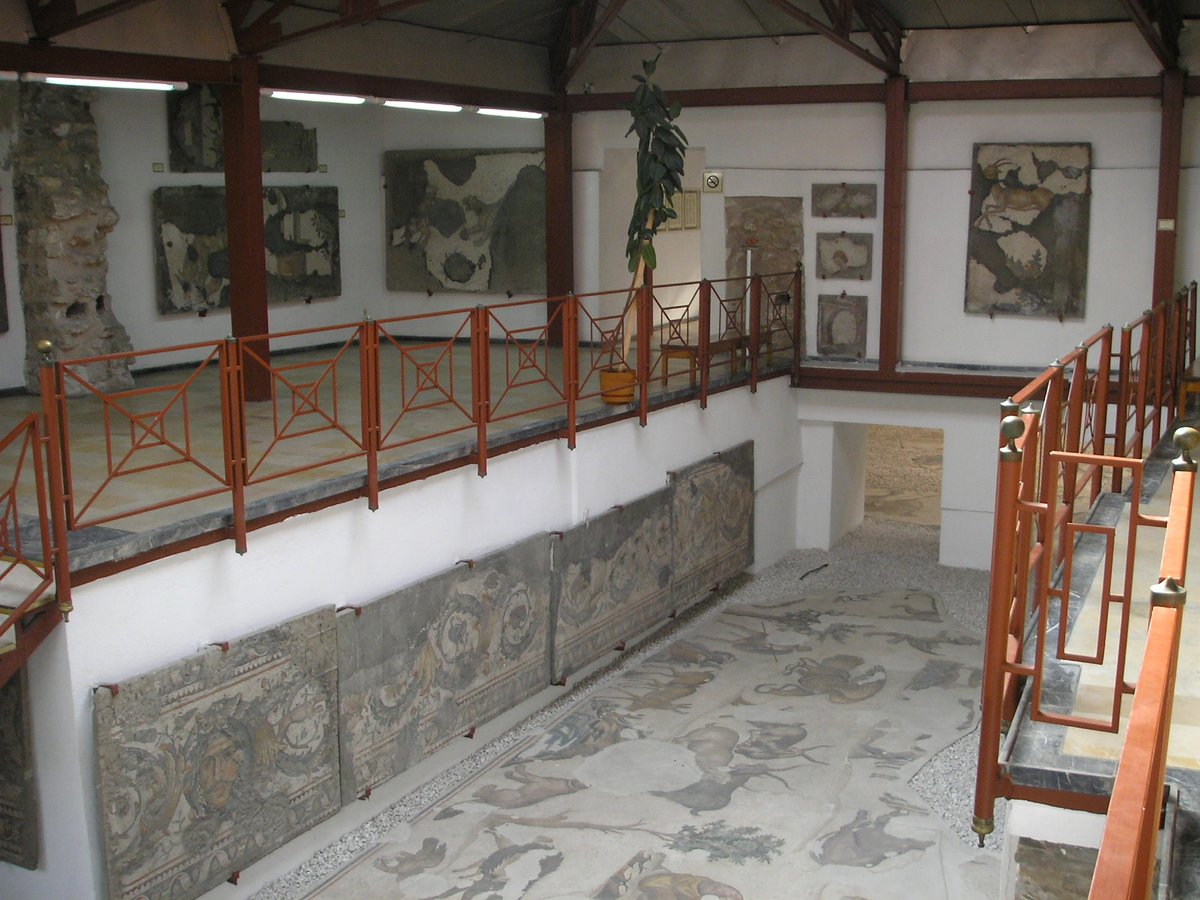
Great Palace Mosaic Museum: Visiting Hours, Tickets, and Fatih Historical Sites Guide
Date: 14/06/2025
Introduction to the Great Palace Mosaic Museum in Fatih, Istanbul
The Great Palace Mosaic Museum is a key destination for those seeking to immerse themselves in the artistic and imperial heritage of Byzantine Constantinople. Located in Istanbul’s Sultanahmet district within the historic Fatih municipality, the museum houses an extraordinary collection of secular mosaics that once decorated the Great Palace of Constantinople—the opulent seat of Byzantine emperors for over eight centuries. These mosaics, dating from roughly 450–650 CE and largely attributed to the era of Emperor Justinian I, provide a vivid window into the everyday life, mythology, and cultural vibrancy of the Byzantine elite.
Unlike the era’s predominantly religious mosaics found in churches and basilicas, the Great Palace mosaics are secular in theme, depicting lively scenes of nature, animals, and human activities with remarkable realism and technical mastery. The museum is uniquely constructed above the original excavation site, enabling visitors to appreciate these ancient works in their authentic context.
Situated just steps from iconic landmarks such as Hagia Sophia, the Blue Mosque, and Topkapi Palace, the Great Palace Mosaic Museum is a must-see for history enthusiasts and travelers exploring Istanbul’s rich Byzantine heritage. Visitors can view approximately 180–250 square meters of mosaics, carefully preserved in a climate-controlled environment. This guide provides comprehensive information on the museum’s history, artistic features, visiting hours, ticketing, accessibility, and tips for making the most of your visit.
For the latest practical information, consult the official museum website (muze.gov.tr), as well as reliable travel resources like life-globe.com and istanbul.com.
Table of Contents
- Introduction
- Historical Background and Excavation
- Artistic Features and Themes
- Preservation and Museum Establishment
- Significance in Byzantine Art and Archaeology
- Visitor Information
- Frequently Asked Questions (FAQ)
- Visuals and Media Suggestions
- Conclusion
- References and Useful Links
Historical Background and Excavation
Origins and Historical Context
The Great Palace Mosaic Museum is intimately connected to the Great Palace of Constantinople, the principal imperial residence of the Byzantine Empire from its foundation by Constantine the Great in 330 CE. This sprawling palace complex, covering nearly 200,000 square meters at its height, was built between the Hippodrome and Hagia Sophia, serving as the administrative and ceremonial heart of the Eastern Roman Empire (life-globe.com).
The mosaics displayed in the museum once adorned the peristyle courtyards of the palace, with most dating from the reign of Emperor Justinian I (527–565 CE), a period renowned for artistic innovation and imperial grandeur (asiapositive.com).
Discovery and Excavation
In the 1930s, British archaeologists initiated systematic excavations beneath the Arasta Bazaar, near Sultanahmet Square and the Blue Mosque. They uncovered about 250 square meters of mosaic flooring, astonishingly well-preserved despite centuries of urban development. Experts estimate that the original mosaic surface extended over 3,000 square meters, much of which remains buried beneath the modern city (life-globe.com; asiapositive.com).
Artistic Features and Themes
Secular Iconography and Craftsmanship
The mosaics of the Great Palace are remarkable for their secular subject matter and technical sophistication. Crafted from millions of tiny tesserae—colored stones, glass, marble, and semi-precious materials—these artworks portray a diverse array of scenes, including:
- Eagles battling snakes
- Lions in combat with bulls
- A mare nursing her foal
- Children herding geese or at play
- Men milking goats
- Bears eating apples
- Hunting scenes with tigers, boars, and lions
- Mythological vignettes, such as Bellerophon fighting the Chimera and Dionysus carried by Pan (istanbul.com)
Each square meter of mosaic contains up to 40,000 tesserae (each about 5 mm in size), with the original floors comprising an estimated 75–80 million pieces (gottagoturkey.com). The artists employed advanced techniques, including the “fish scale” pattern for backgrounds and the “opus vermiculatum” method for intricate figures, to achieve subtle gradations and lifelike detail.
Thematic and Cultural Diversity
These mosaics offer a vivid panorama of Byzantine courtly life, reflecting both classical Greco-Roman and Eastern influences. The presence of exotic animals, mythological creatures, and scenes of rural leisure speaks to the cosmopolitan character of Constantinople and the intellectual curiosity of the Byzantine elite (istanbulbeyond.com).
Preservation and Museum Establishment
Originally protected by a modest wooden shelter in 1953, the mosaics suffered from inadequate environmental controls. Recognizing the need for better preservation, authorities constructed a modern stone building above the excavation site, opening the current museum in 1979. This purpose-built structure allows visitors to view the mosaics in situ and ensures their ongoing conservation (life-globe.com; whichmuseum.com).
Significance in Byzantine Art and Archaeology
The Great Palace mosaics rank among the largest and most diverse surviving groups of late antique secular mosaics. Their iconographic richness provides a rare lens into the daily life, mythology, and cultural values of the Byzantine court. Archaeologically, they help reconstruct the palace’s original layout, while the museum’s display of architectural fragments deepens our understanding of the site (life-globe.com).
The rediscovery and conservation of these mosaics have significantly advanced modern scholarship on Byzantine art, offering insight beyond the more commonly studied religious monuments of Istanbul (gottagoturkey.com; istanbeautiful.com).
Visitor Information
Visiting Hours and Admission
- Standard Hours: Open Tuesday–Sunday, 09:00–17:00; closed Mondays and select public holidays. Hours may vary during renovations or special events (muze.gov.tr).
- Summer Schedule (April 1–October 31): 09:00–19:30 (last entry at 19:00)
- Winter Schedule (November 1–March 31): 09:00–18:30 (last entry at 18:00)
- Temporary Closures: The museum may close for restoration; check the official website before your visit.
Tickets and Pricing
- Admission: ~120 Turkish Lira for foreign visitors (as of June 2025); discounts for students, seniors, and children under 8; Museum Pass Istanbul holders enter free (muze.gov.tr).
- E-tickets: Recommended to purchase online to avoid queues, especially in high season.
- Museum Pass: Offers access to multiple Istanbul sites and is excellent value for museum enthusiasts (Museum Pass details).
Accessibility
- Wheelchair Access: The museum is partially accessible, but some areas have uneven surfaces due to the historic site. Wheelchair users should contact the museum in advance for assistance.
- Facilities: Restrooms are available within the Arasta Bazaar complex; cloakroom for coats and bags is provided.
Tips for Visiting
- Best Times: Visit early morning or late afternoon to avoid crowds and enjoy optimal lighting.
- Duration: Allocate 1–1.5 hours for a thorough visit.
- Photography: Non-flash photography is permitted; tripods/professional equipment require permission.
- Guided Tours: Audio guides and multilingual guided tours are available for a fee—highly recommended for deeper insight.
- Visitor Etiquette: Do not touch the mosaics or lean over barriers; keep noise to a minimum; no food or drink inside exhibition areas.
Getting There
- By Tram: Take the T1 tram to Sultanahmet station, a 5-minute walk away.
- By Foot: Centrally located for easy walking access from major Sultanahmet sites.
- By Taxi: Widely available, but expect traffic in the historic district.
Nearby Attractions
The Great Palace Mosaic Museum is perfectly situated for a full day of cultural exploration. Nearby highlights include:
- Hagia Sophia: Iconic structure blending Byzantine mosaics and Islamic calligraphy (Hagia Sophia details)
- Blue Mosque: Renowned for its striking blue İznik tiles (Blue Mosque info)
- Topkapi Palace: Lavish former residence of Ottoman sultans
- Basilica Cistern: Atmospheric underground reservoir (Basilica Cistern info)
- Turkish and Islamic Arts Museum: Showcasing Islamic calligraphy, ceramics, and textiles (Museum details)
- Arasta Bazaar: Traditional market adjacent to the museum for souvenirs and refreshments (Arasta Bazaar info)
- Hippodrome of Constantinople: Ancient public square with Roman monuments (Hippodrome info)
- Little Hagia Sophia: One of Istanbul’s oldest religious buildings (Little Hagia Sophia info)
Dining and Refreshments
- Arasta Bazaar Cafés: Turkish coffee, tea, and light snacks.
- Nearby Restaurants: Try Sultanahmet Köftecisi for classic Turkish meatballs or Seven Hills Restaurant for rooftop views.
Frequently Asked Questions (FAQ)
Q: What are the Great Palace Mosaic Museum’s visiting hours?
A: Generally 09:00–17:00 (Tuesday–Sunday), with extended summer and reduced winter hours. Check muze.gov.tr for current schedules.
Q: How much are tickets?
A: ~120 TL for foreigners (2025), with discounts available. Museum Pass holders enter free.
Q: Is the museum wheelchair accessible?
A: Partially accessible; contact staff in advance for details.
Q: Are guided tours available?
A: Yes, audio guides and multilingual guided tours are offered for a fee.
Q: Can I take photos inside?
A: Yes, without flash or tripods.
Q: What other sites are nearby?
A: Hagia Sophia, Blue Mosque, Topkapi Palace, Basilica Cistern, and more.
Visuals and Media Suggestions
- Include images of the mosaics, museum interior, and exterior.
- Alt text: “Great Palace Mosaic Museum Istanbul Byzantine mosaics”
- Alt text: “Entrance to the Great Palace Mosaic Museum Istanbul”
- Alt text: “Map of Great Palace Mosaic Museum Istanbul and nearby landmarks”
- Explore virtual tours and galleries on the official museum website.
Conclusion
The Great Palace Mosaic Museum offers an unparalleled glimpse into the artistry, culture, and daily life of Byzantine Constantinople. Its exceptional secular mosaics, expertly preserved and displayed in a modern museum above the original site, set it apart from other historical attractions in Istanbul. Visitors can deepen their journey through Istanbul’s storied past by combining a visit here with exploration of nearby landmarks.
Check current opening hours, ticket options, and accessibility details before your visit. Consider guided or audio tours for a richer experience, and enjoy the vibrant atmosphere of Sultanahmet’s surrounding attractions. For the most up-to-date information, visit the official museum website or download the Audiala app for curated guides and travel tips.
References and Useful Links
- Great Palace Mosaic Museum Official Site (muze.gov.tr)
- Visiting the Great Palace Mosaic Museum Istanbul: Hours, Tickets, History & Travel Tips, Life-Globe
- Great Palace Mosaic Museum: Visiting Hours, Tickets, and Artistic Significance, Istanbul.com
- Museum Experience and Visitor Information, Nomadic Niko
- Ultimate Guide to Visiting the Great Palace Mosaic Museum, ArtAndThenSome
- Byzantine Mosaic Art Overview, istanbultouristpass.com
- Museum Pass Istanbul
For more travel inspiration, download the Audiala app for audio guides, maps, and the latest updates on Istanbul’s historical sites. Follow us on Facebook and Instagram for cultural news and travel tips.
